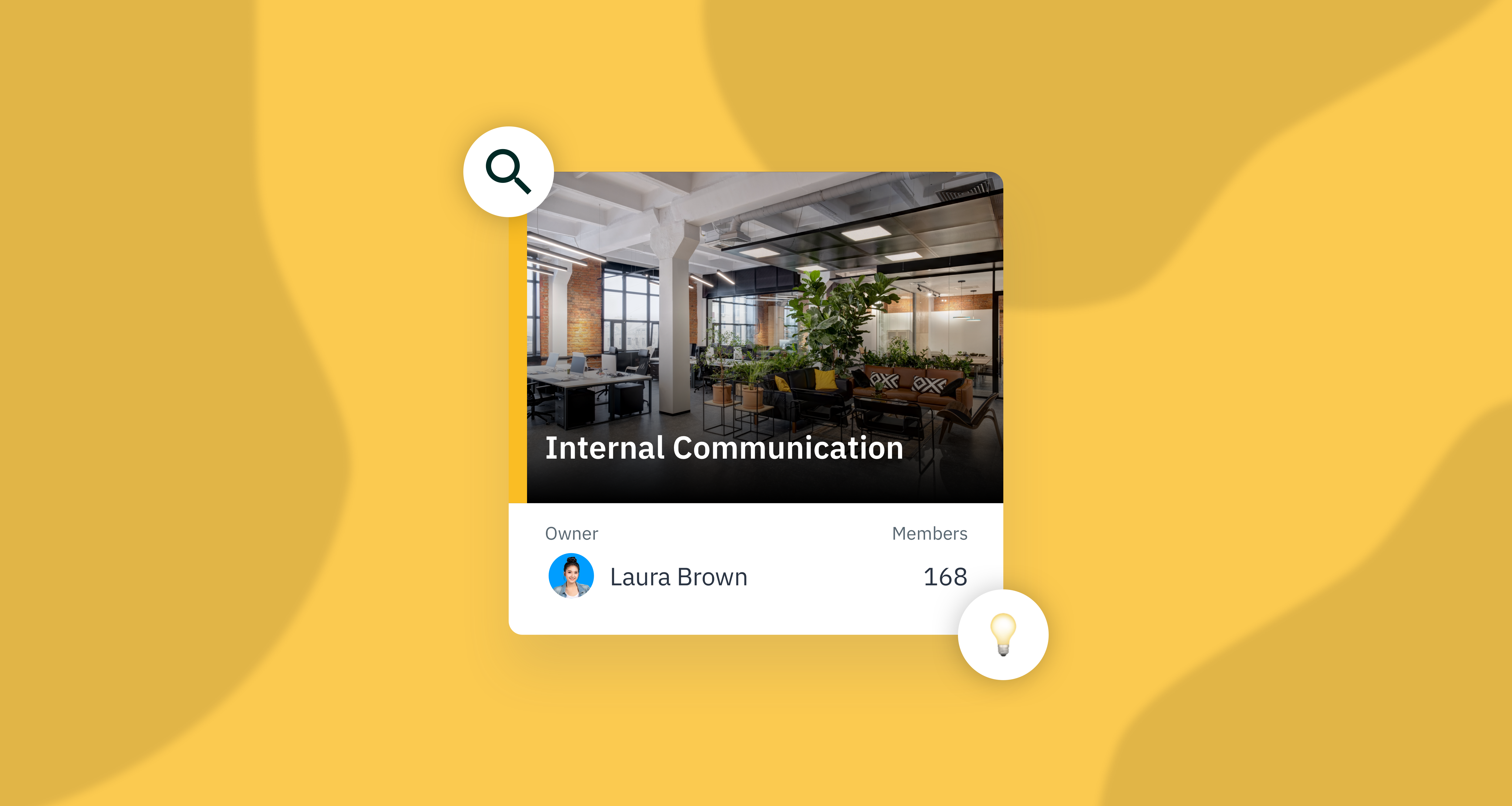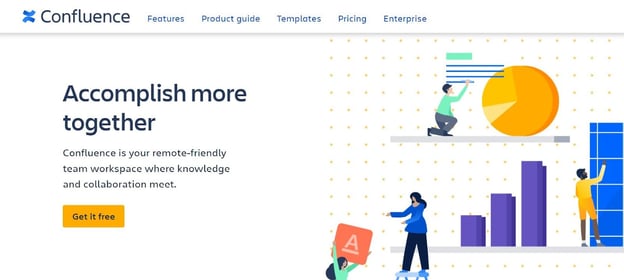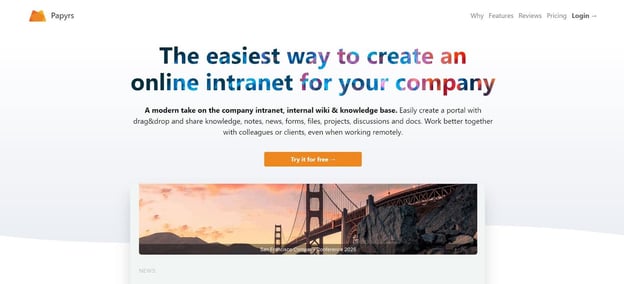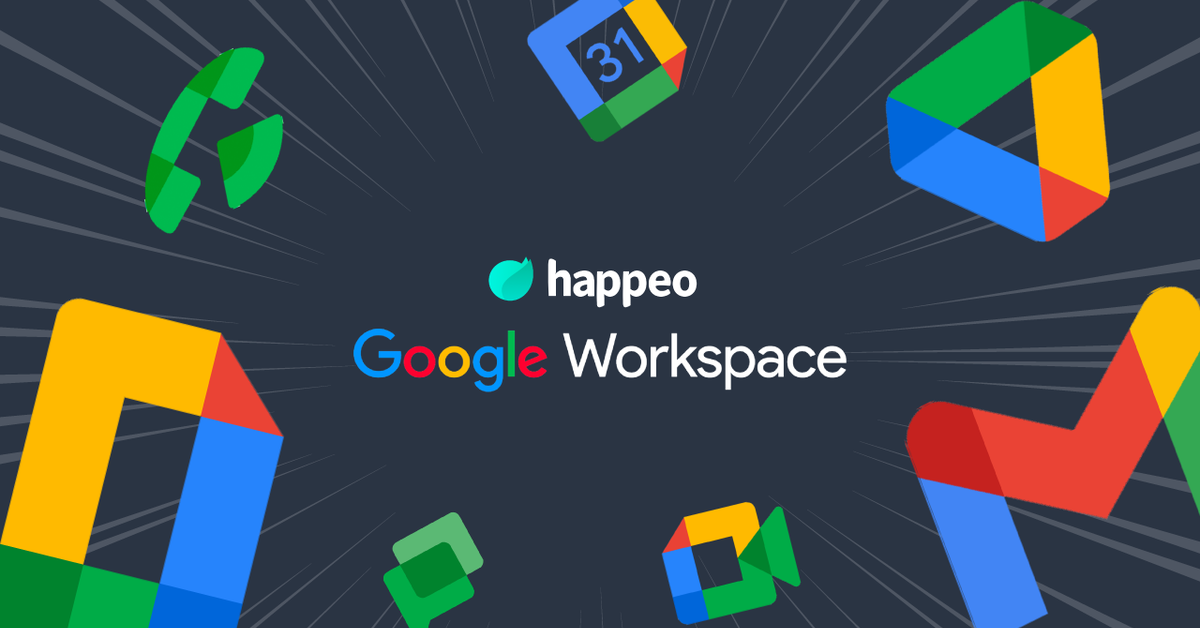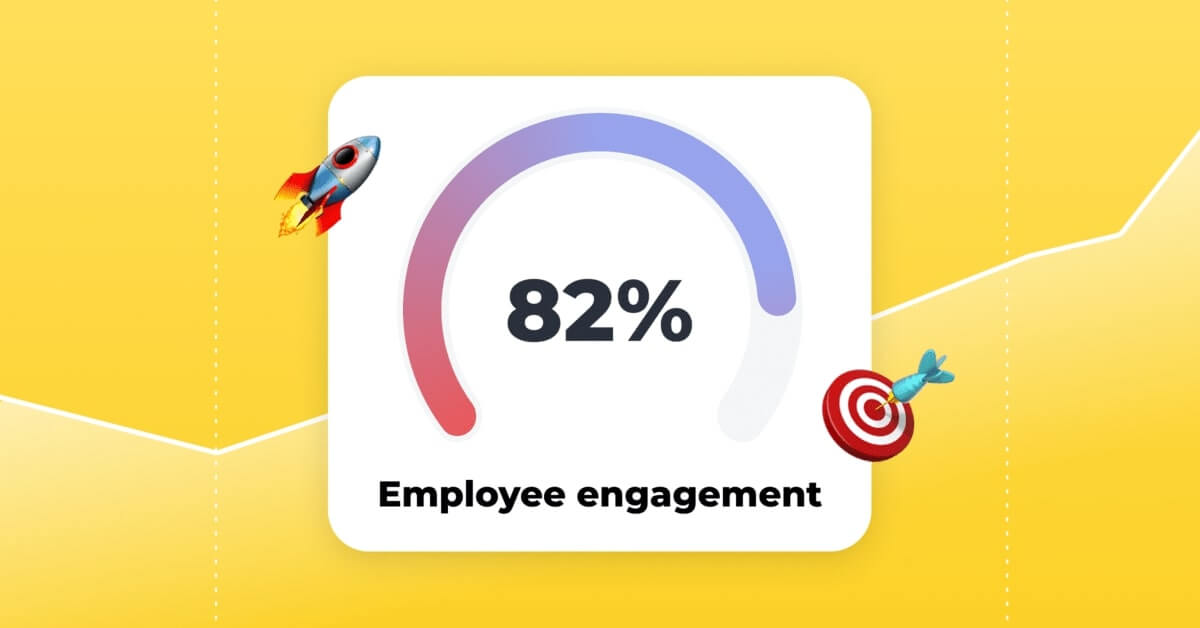

Jonathan Davies
21 mins read
Start building your digital home with Happeo
Request a demoIn the eight years since its launch, Confluence has become one of the most popular collaboration tools on the market.
In fact, the software’s creator, Atlassian, claims that 83% of Fortune 500 companies use at least one of its products, which include other popular platforms like Trello and JIRA.
However, the software does have some downsides, which leave many companies looking for Confluence alternatives that are easier to use and come with more useful and intuitive features.
If you’re looking for a knowledge management and collaboration platform to help your team do their best work together, here are the 15 best Confluence alternatives to try in 2024. But first things first:
What is Confluence?
Confluence is an enterprise knowledge management and team collaboration software. It allows users to create “spaces” for each team or project, and then create “pages” within those spaces.
Pages are living documents that team members can collaborate on in real time. The platform includes a wide range of page templates to help users create things like product roadmaps, SWOT analyses, and hiring processes in just a few clicks.
The Atlassian marketplace allows users to browse over 600 add-ons that can improve their experience with the platform.
Plus, Confluence partners very well with JIRA, another Atlassian product that uses Agile methodology. This makes Confluence a popular solution for software developers and other teams that are already familiar with Agile workflows.
Why do companies need Confluence alternatives?
Although Confluence is a very popular tool that comes with many features, it does have some drawbacks. Here are a few reasons why companies might be seeking Confluence alternatives:
A steep learning curve
Confluence is somewhat over-engineered and difficult to use, especially for teams without a strong IT background. Other tools are much more intuitive, which also results in higher adoption rates.
Reliance on plugins
To get the most out of Confluence, users must either develop their own plugins or buy them through the Atlassian marketplace. This is both expensive and impractical compared to many other tools, which integrate perfectly with external APIs.
Limited search functionality
Confluence’s search process is slow and often turns up irrelevant results. Other platforms come with much more intuitive and comprehensive Search Feature.
Lack of collaboration features
Confluence lacks the social and communication features that other solutions have built in. These features can be crucial to driving engagement and productivity.
Limited integrations
Confluence is really behind other applications when it comes to seamless and convenient integrations with popular tools.
15 best Confluence alternatives and competitors to try in 2024
Looking for an alternative to Confluence that’s easier to use, more feature-packed, and comes in at a more attractive price point?
Read on for the top 15 Confluence alternatives for 2024.
1. Happeo
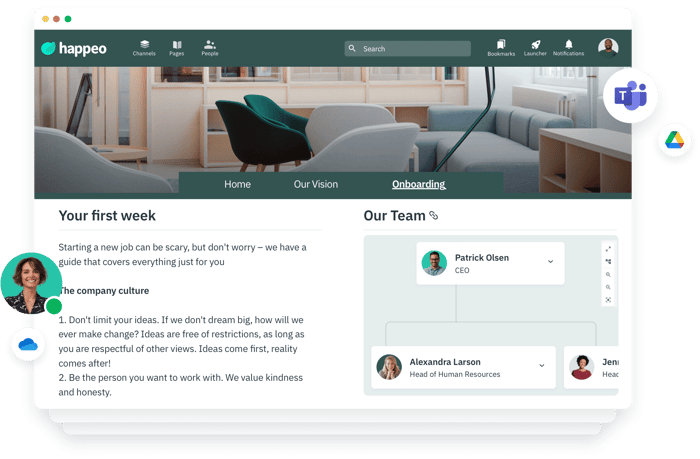
Notable brands: Doctolib, Uberflip, OneGoal, State Auto
Happeo is an enterprise intranet solution, knowledge sharing center, and collaboration tool that helps teams to work together more efficiently — wherever they’re working from.
Happeo is built around Pages, which are dynamic documents where your organization’s knowledge lives. Pages are easy to create thanks to the drag-and-drop page builder, where you can add widgets like Google Drive files, people cards, and social posts.
You can use Happeo to create secure, sociable Channels for teams to communicate and share content, boosting engagement and helping everyone to stay connected. Colleagues can also collaborate in real time on Google Docs, Sheets, or Slides, without leaving Happeo.
And Happeo’s features don’t stop there: the platform also includes calendars, integrated video and voice calls, instant messaging, and in-depth Analytics to help you figure out which content is resonating with its audience. Happeo can also automatically create a people directory and visual org chart, and rich, searchable profiles for every employee make it easier to get to know each other.
If you’re looking for an intuitive, feature-packed, and user-friendly alternative to Confluence that your employees will love using, consider giving Happeo a try.
Why Happeo is a great alternative to Confluence:
- Seamless team collaboration in one user-friendly interface
- No learning curve, even for non-technical teams
- Powerful Universal Search function
- Social and collaborative features to keep everyone connected
- Integrations with Google Workspace and Office 365
Key features:
- Social intranet
- Channels for posts and announcements
- Mobile app
- Employee directory and org chart
- Lifecycle management
- Shared calendar
- Universal Search
- Fully branded environment
- Analytics and reporting
- Office 365 and Google Workspace integrations
2. Google Workspace
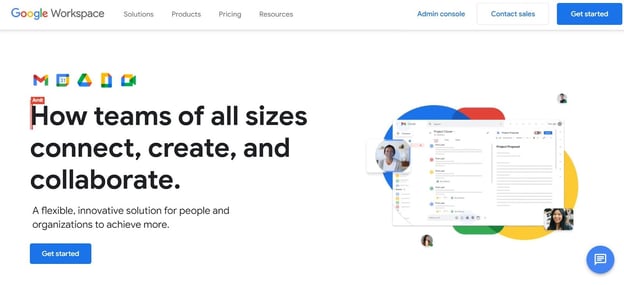
Notable brands: Colgate-Palmolive, ATB Financial, Atlassian, BBVA
Google Workspace is Google’s business package, which includes familiar tools like Drive, Gmail, Calendar, Docs, Sheets, Slides, Keep, and Meet. This makes it a versatile and useful alternative to Confluence.
Teams can use Google Drive to store and share files and folders and collaborate on Documents, Sheets, and Slides in real time. You can also use the platform to view and edit calendar appointments, send meeting invites, and even attend virtual meetings using Google Meet.
The best part? Most of us are already familiar with Google’s suite of productivity tools, so there’ll be little to no learning curve for your team.
Key features:
- Simultaneous editing and commenting
- Videoconferencing
- Scheduling and calendars
- Intranet
- Surveys and forms
- File search
- Cloud storage
Google Workspace and Happeo
Thanks to Happeo’s Google Workspace integration, you don’t even need to leave the platform to work on Google Drive files, manage calendars, and send meeting invites. You can also embed Drive files like docs, sheets, and slides directly into your intranet pages, so everyone has the information they need, where they need it.
Happeo and Google Workspace work together to provide a seamless and convenient collaboration experience, in one easy-to-use platform.
3. Microsoft SharePoint
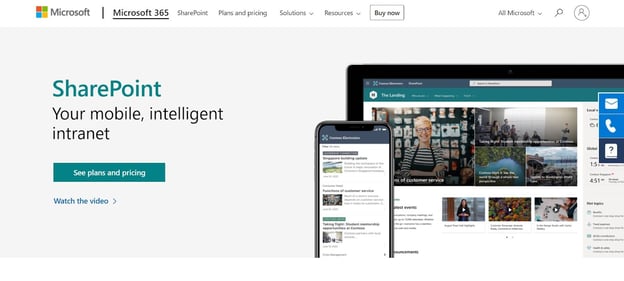
Notable brands: Goodyear, Nascar, Marks & Spencer, Qantas, Hershey
Microsoft SharePoint is an intranet portal, document storage solution, and collaboration tool. It’s also one of the most popular Confluence competitors on the market.
SharePoint is a versatile and powerful platform that’s used by more than 200 million people worldwide. It can be extensively customized and its large feature set means that it fits many different use cases.
However, this versatility means that SharePoint is also a complex tool with a steep learning curve. And implementing and maintaining the platform can be expensive: most organizations not only need to employ a dedicated SharePoint administrator but also need to deliver comprehensive employee training on how to use the platform.
SharePoint tends to see lower adoption rates than other Confluence alternatives.
Key features:
- Team sites
- Document management and storage
- Workflows
- Integrated file editing
- Employee directory
- Analytics
- Mobile app
4. Nuclino
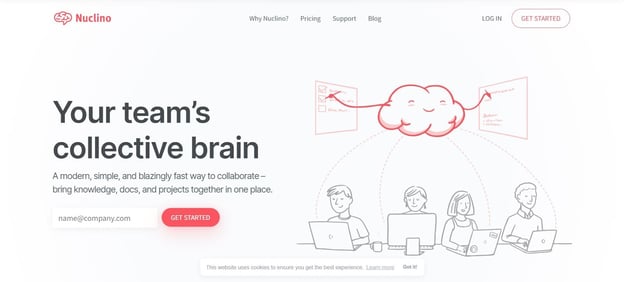
Notable brands: NASA, Ubisoft, Paddle, Mozilla
Nuclino is a lightweight and user-friendly alternative to Confluence. Users can create “workspaces” for teams, projects, or departments, where they can store, share, search for, and collaborate on documents like guides or meeting notes. You can drag and drop files directly into the platform from your desktop to instantly share them with colleagues.
Comments and notifications help remote teams to communicate effectively, and the powerful search function helps you find the information you need.
You can choose between several different views within Nuclino to help you visualize project progress. For example, you can view projects as Kanban boards, nested lists, or mind-map-style graphs.
Nuclino also comes with a mobile app and several useful integrations, including Slack, GSuite, and DropBox.
Key features:
- Real-time editing
- List, graph, and board views
- Version history
- Comments and mentions
- 40+ integrations
5. Asana
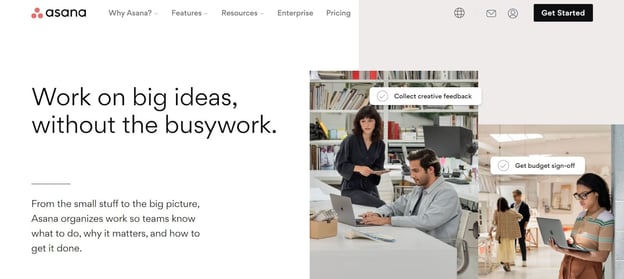
Notable brands: Decathlon, LVMH, Deloitte, Trivago, Spotify
If you’re looking for a powerful task and project management platform, you might want to try Asana.
You can use the tool to create “boards” for each project using an in-built template to save time. Then, you can create sections, tasks, and columns within each board, and organize boards into folders. Communication is easy thanks to the in-built comment feature, which you can also use to tag colleagues and assign them tasks.
Asana doesn’t come with the document management features that other Confluence alternatives have built in. In fact, Asana doesn’t store your documents at all – you simply attach them to the relevant tasks and boards as needed.
However, if you’re looking for a simple yet powerful task-management tool to keep your team organized, you might want to check it out.
Key features:
- Boards and tasks
- Project templates
- Access controls
- Comment threads
- Popular integrations
6. Slack

Notable brands: Uber, Target, Expedia, Intuit
You’ve probably heard of Slack. But have you thought about using it as an alternative to Confluence?
Slack users can create channels to instantly communicate with specific groups or project teams, and you can also use the platform to send individual messages, and even make video and voice calls.
Slack doesn’t come with knowledge management features like other Confluence alternatives. However, when it comes to synchronous, instant communication, it’s pretty much unbeaten — particularly since it’s so easy and pleasant to use.
For a more well-rounded Confluence alternative, consider using Slack alongside another tool. For example, you can get the best of both worlds by seamlessly integrating Slack with Happeo.
Key features:
- Instant messaging
- Team channels
- Voice and video calls
- File-sharing
- Desktop and mobile apps
7. Tettra
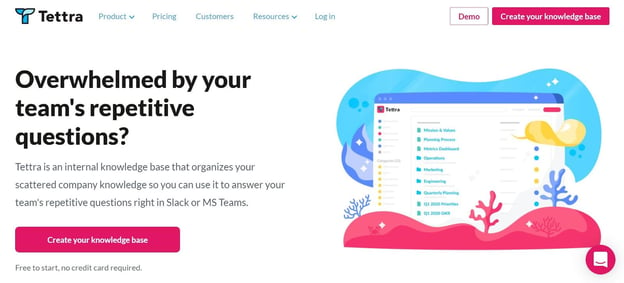
Notable brands: Techstars, Smartbug, Geckoboard, Chess.com
Tettra is an internal knowledge base that saves you time by allowing you to store the answers to common questions in one central location. Your whole team can document their knowledge using the simple page editor.
Employees can add suggestions if there’s a key piece of information missing, tagging in the person who’s most likely to have the knowledge. Plus, you can even use this feature to send yourself reminders to add information to a page.
One of Tettra’s most interesting features is its Slack integration. Users can get Slack notifications whenever new content is added in Tettra, and even use Slack to ask questions and search for information.
Key features:
- Internal knowledge base
- Q&A feature
- Usage analytics
- Google groups import
- Slack, GSuite, and MS Teams integrations
8. Bit.ai
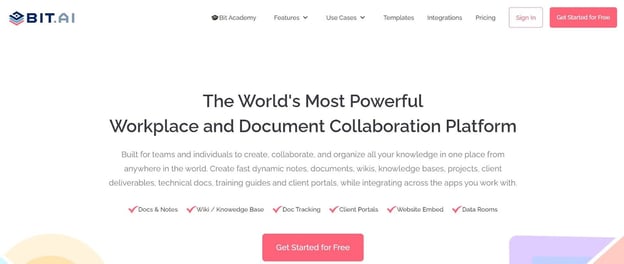
Notable brands: Canon, Accenture, Harvard University, New Zealand Post
Bit.ai is a document collaboration tool that allows teams to track, manage, and share company knowledge. You can use it to share documents and create internal wiki pages detailing important company information. The easy-to-use page editor also allows you to insert rich elements like images, video content, and cloud files.
The platform also offers real-time document collaboration, comments, tags, and a chat function to enhance team communication. Documents are organized into workspaces, and the smart search function allows users to find content across workspaces, folders, and documents.
Bit.ai also comes with some 70+ integrations, including popular tools like Google Drive, OneDrive, and SharePoint.
Key features:
- Wikis
- Real-time collaboration
- Chat function
- Document tracking
- Workspaces
- 70+ integrations
9. Quip
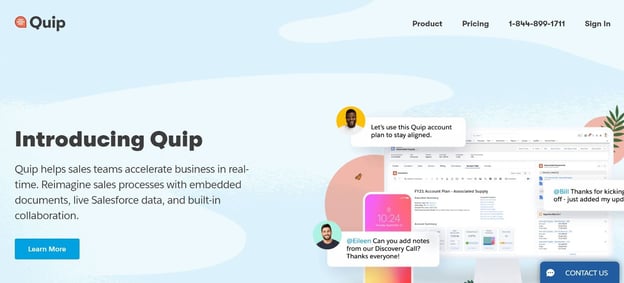
Notable brands: Amazon, Facebook, 21st Century Fox, Cisco, EA
Owned by CRM giant Salesforce since 2016, Quip is a great alternative to Confluence for sales teams that want to optimize their workflows.
Quip combines documents, spreadsheets, and slides with a real-time chat function that lets you communicate with your collaborators without leaving the platform. Documents shared through Quip are automatically synced to the cloud, so they’re always up to date.
You can embed different elements into your Quip documents, including mentions, links to other docs, dynamic calendars, checklists, and even spreadsheets filled with Salesforce data.
Quip also comes with plenty of templates for things like account plans, sales playbooks, and executive briefings.
Key features:
- Team chat rooms
- File-sharing
- Mobile and desktop apps
- Offline working
- Integrated spreadsheets, docs, and slides
- Checklists
10. BookStack
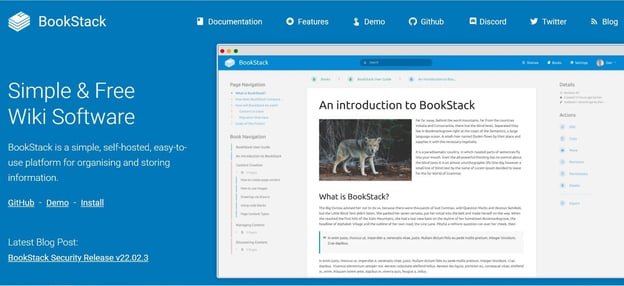
BookStack is a free, open-source, and self-hosted platform for storing and organizing information. Surprisingly, it’s also fairly user-friendly once it’s set up, thanks to its simple interface and WYSIWYG editor.
The content you upload is broken down into three simple groups: books, chapters, and pages. You can also organize your books into “bookshelves”, for example for different departments. Content is fully searchable, and you can see an activity feed from your home page that displays recent changes or uploads.
While BookStack’s features are relatively simple (it is free, after all), it could be a good option if you’re looking for an easy and lightweight alternative to Confluence.
Key features:
- Free and open source
- Customizable logo, name, and other options
- Searchable, multilingual content
- Authentication
11. Bloomfire

Notable brands: Draft Kings, Ogilvy, VRBO, Orvis
Bloomfire is a central knowledge base for all the content your employees need. Users can share knowledge through text, charts, images, audio, and video.
Employees can ask questions and comment and react to content within the platform. And in-platform analytics help leaders spot knowledge gaps and understand which content is getting the most traction.
One of Bloomfire’s best features is its AI-powered search function. The search engine deep-indexes every word in every piece of content (including video), and other features like automated tagging, customizable filters, and search suggestions make it even easier to find information.
Bloomfire also comes with a mobile app and a wide range of integrations.
Key features:
- Centralized knowledge base
- Mobile support
- Lifecycle management
- AI-generated tags and deep search
- Q&A feature
- Popular integrations
12. Helpjuice
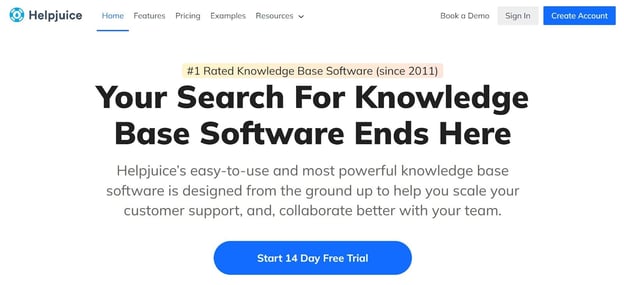
Notable brands: Amazon, WHO, Virgin Mobile, Hertz, ZoomInfo
Helpjuice is an internal knowledge base platform with a number of interesting features.
You can use the platform to create documents with the easy WYSIWYG editor, or drag and drop Word documents directly into a Helpjuice article — the program will automatically pull out the content, formatting and all. You can also interlink articles so that everything is connected, and collaborate directly within documents and communicate using comments, similar to a Google Doc.
One of Helpjuice’s most impressive features is its instant search function, which allows you to search across all content, including PDFs and even text found within images!
The tool offers several useful integrations, including Zapier, Salesforce, Zendesk, and Slack.
Key features:
- Access controls
- Version history
- WYSIWYG editor
- Direct in-app collaboration
- Powerful search functionality
13. Box for Business
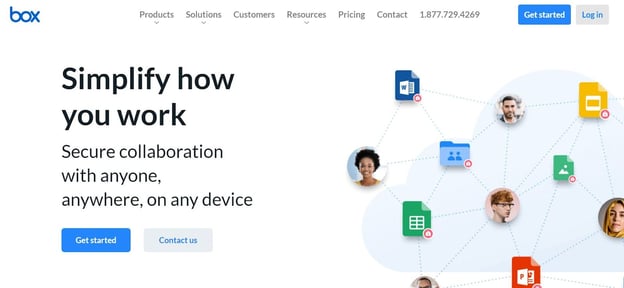
Notable brands: Morgan Stanley, United States Air Force, AstraZeneca, JLL
Box for Business is a software solution that lets teams create, edit, review, and securely share files. Multiple users can use the platform to simultaneously edit documents on mobile, web, or desktop.
Box’s intuitive interface makes it a good alternative to Confluence if you’re looking for something more user-friendly. You can even use Box to automate repetitive workflows like onboarding or document approvals, to help you work more efficiently.
The software comes with lots of integrations, which means that it will likely work with the tools your employees already use.
Key features:
- Password-protected share links
- Automated workflows
- Stats and reporting
- Version control
- Office 365 integration
- Custom branding
14. Papyrs
Notable brands: Subway, British Chamber of Commerce, National Geographic
Papyrs is a user-friendly tool that combines several functions, including internal and external wikis and an intranet portal.
You can create wiki pages using Papyrs’ intuitive drag-and-drop editor, embedding widgets like polls, checklists, forms, and videos. You can even add a discussion area to a page, where colleagues can post comments with text, files, and images, right within the document.
Papyrs’ powerful search function means employees can quickly find the information they need. There are also notifications and an activity stream to keep you posted on the important stuff.
The platform also comes with analytics features, allowing managers to track views and reactions. You can connect to Google Analytics for a more in-depth analysis.
Key features:
- Wikis
- Calendars
- Newsfeed
- Drag-and-drop page editor
- Discussion forums
15. Fleep
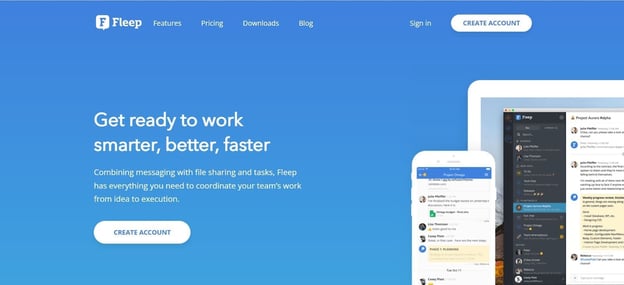
Notable brands: Greenice, Adduco, PlanetX, Lingvist
Fleep is an easy-to-use messenger tool that aims to rid organizations of endless email threads where information can get lost.
If you’re looking for a platform that can replace Confluence’s full suite of knowledge management features, Fleep isn’t the right choice. However, it does have some unique features that make it a good option if you’re looking for a simple and useful messenger tool.
Each conversation has a pinboard where you can pin important messages. You can also create and assign tasks within conversations, and set yourself reminders using the IFTTT integration.
Speaking of integrations, Fleep comes with many useful ones, including Zapier, DropBox, Google Drive, OneDrive, JIRA, and Slack.
Key features:
- Pinned messages
- Google Hangouts integration
- Desktop and mobile apps
- Task tracking
- File storage
Choosing the right Confluence alternative for your business
There are many different alternatives to Confluence available, and the one you choose will likely depend on the size, nature, and needs of your business.
If you’re looking for an alternative to Confluence in 2024, you need to make sure it:
- Is easy to use: If you choose a complicated tool with a steep learning curve, your employees just won’t use it — and that’s a waste of everyone’s time.
- Has an advanced search function: What’s the point of a knowledge management system if your teams can’t find the information they need, when they need it? Make sure the tool you choose has an advanced and comprehensive search function that makes people’s lives easier — not harder.
- Comes with built-in collaboration tools: The best Confluence alternatives come with intuitive and innovative functions that help your teams to collaborate more efficiently and do better work. Why would you waste your time with a product without those?
- Enables internal communication: Communication = engagement = retention. If you want your best employees to stick around, you need to make sure you’re choosing tools that promote useful, positive, and productive communication.
- Integrates with your existing stack: Again, your job here is to make your employees’ lives easier. Don’t waste their time with a platform that doesn’t work with the tools they already use.
Happeo is an enterprise solution that combines knowledge management, social intranet, and collaboration functionalities in one user-friendly location. Our average ramp-up time is just 6–8 weeks, and our adoption rates are world-class.
If you need a Confluence alternative that your teams will actually use, think about giving Happeo a try.
Interested? Request a personalized demo to find out more.


